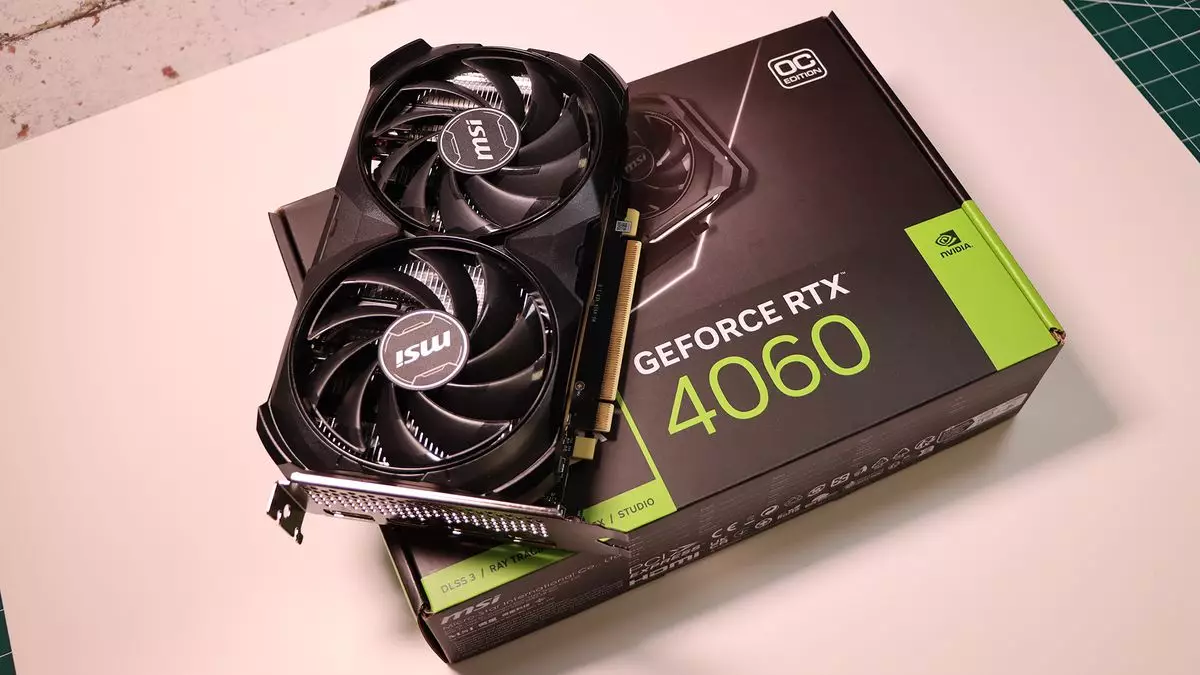The recent Steam hardware survey results unveiled noteworthy shifts in the graphics card landscape, particularly highlighting the increased adoption of Nvidia’s GeForce RTX 4060 and its Ti counterpart. With a 1.17% and a 0.76% bump in their user bases, respectively, these figures may initially appear modest. However, a deeper examination reveals a significant 34% increase in the RTX 4060’s share, moving from 3.41% to 4.58% in the surveyed GPU market. This surge is not isolated to Nvidia; the entire ecosystem appears on the brink of transformation due to pending next-generation card releases. As the anticipation builds, the influence of sales and discounted pricing strategies becomes increasingly critical in shaping market behavior.
The lower-end of the Nvidia 40-series has seen notable price reductions, making graphics cards more accessible than they have been in recent years. Given the history of skyrocketing prices in the GPU market, the current affordability may serve as a catalyst for consumers previously deterred by costs. Notably, the RTX 4060’s pricing dropping below the $300 mark signals a pivotal moment, potentially encouraging budget-conscious gamers to make the jump to current-generation hardware. In this context, it is essential to consider how the approaching releases of Nvidia’s RTX 50-series and AMD’s RX 8000-series cards will inform consumer decisions. Gamers looking to upgrade may lean towards more affordable choices now, while others may strategically hold off for the next wave of advanced gaming technology.
The findings of the survey indicate a possible surge in RTX 4060 inquiries stemming from a specific demographic, particularly within the Chinese gaming community. The increase in Simplified Chinese language use by 1.54% in the survey could correlate with the recent buzz surrounding high-profile game releases such as “Black Myth: Wukong.” With the gaming landscape becoming increasingly globalized, regional trends and preferences play a vital role in shaping overall hardware adoption. Furthermore, as mid-range graphics cards gain traction in markets like China, their success could set a precedent for similar trends in Western markets.
While the spotlight remains on GPUs, other facets of the survey warrant attention. The recent variance in operating system usage encapsulates the fluid nature of the gaming community’s preferences. The 1.57% uptick in Windows 10 users, contrasted with a 1.48% drop in Windows 11, highlights an evolving sentiment toward Microsoft’s latest OS. Previously, Windows 11 had gained a foothold in the Steam community, but these latest shifts could signal a host of factors influencing user experiences. Potential compatibility issues, performance benchmarks, or even user interface preferences could play a role in these fluctuating trends.
While the current survey results paint an interesting picture, the anticipation surrounding the imminent release of next-generation GPUs suggests that market dynamics may alter yet again. Historically, new generations of graphics cards spark both excitement and uncertainty among consumers. As gamers await potential announcements regarding the Nvidia RTX 50-series and AMD RX 8000-series, it’s crucial to consider the broader implications of pricing strategies. In the past, new releases often overshadowed previous generations; however, affordable pricing from the onset could change the game entirely. Bringing more players into the fold may also prompt existing users to upgrade, thus redefining the competitive landscape.
The latest Steam hardware survey highlights pivotal shifts in graphics card adoption and market dynamics, driven largely by pricing strategies and global consumer behavior. As Nvidia and AMD gear up for their next releases, the lessons learned from current trends will undoubtedly inform future strategies. Gamers are on the cusp of significant changes, and it will be crucial to watch how these developments unfold within the community. Whether it’s an uptick in mid-range GPU sales or fluctuations in operating system preferences, the landscape is ever-evolving, promising an exciting journey ahead for both consumers and the gaming industry at large.

